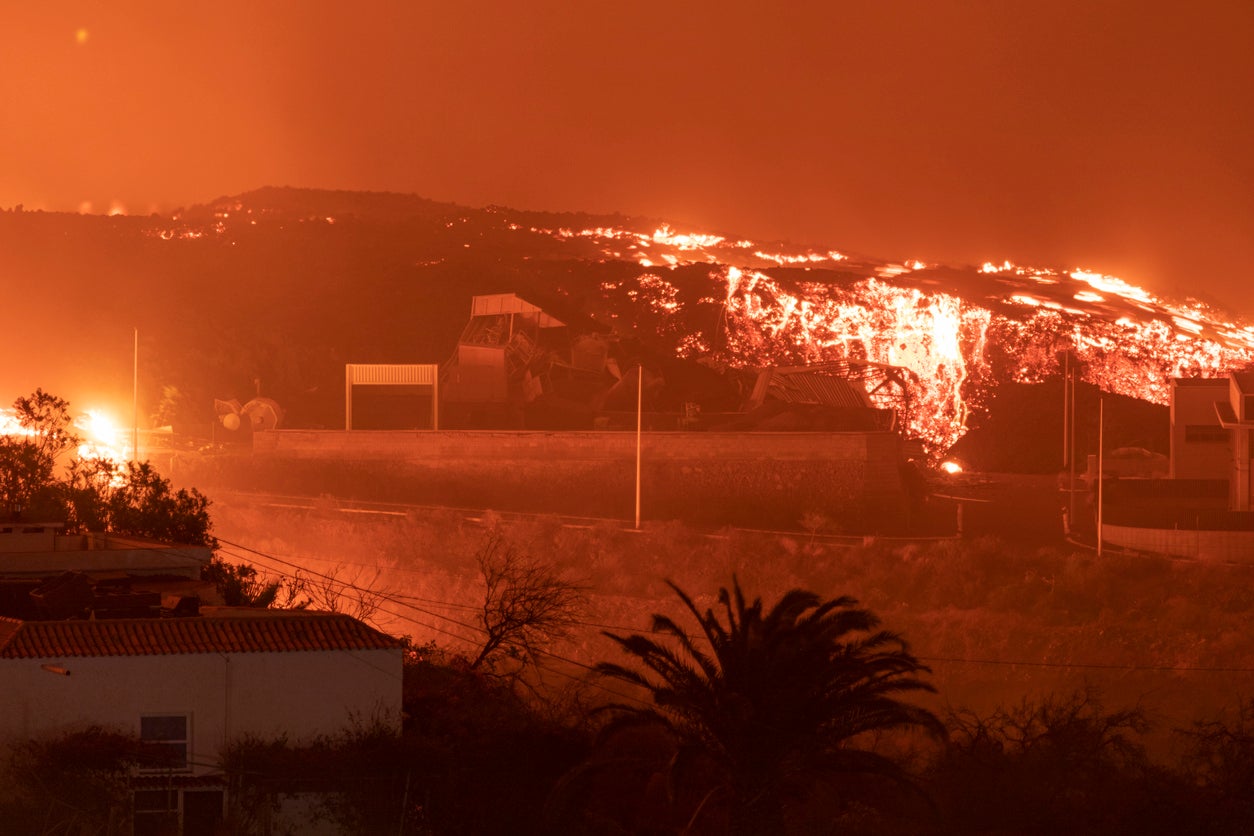Conditions ‘extremely safe’ in La Palma after volcano eruption, says tourism minister
The Cumbre Vieja volcano began spewing lava on 19 September

The situation on the Canary Island of La Palma is “extremely safe” following the major eruption of its Cumbre Vieja volcano, according to the island’s tourism minister, Yaiza Castilla.
The volcano began erupting on 19 September, with lava flow destroying more than 2,000 buildings in the area and forcing around 7,000 locals to relocate.
While some flights were cancelled or redirected in the first couple of weeks, travel to the island has largely been restored, with the volcano’s national park still closed and certain areas of the island off-limits.
Speaking at London’s World Travel Market event, Castilla said: “We have been impacted in terms of tourism because there have been some cancellations. It’s a natural phenomenon, and there has been the need for safety precautions, particularly in the beginning.”
She added that there had been a rise in tourism from around the Canary Islands and Spain, with people coming specifically to see the volcanic activity.
Yaiza emphasised that the southern portion of the island currently affected by the lava flow is small.
“What we’re talking about is 20 per cent of the island that’s affected but the conditions are extremely safe,” she said. “The area affected is closed off and the hotels, flats, villas, paths are available for people to enjoy the marvellous attractions we have on La Palma.”
She said the number of British tourists visiting the island this year “did not meet expectations”, but suggested interest from the UK market is on the rise in general.
“Perhaps owing to the different lockdowns people have suffered, just like us people are wanting to visit other countries, so they want to go somewhere safe, which is what we offer,” said Castilla.
Last month, Carmen del Fresno from the National Geographic Institute’s volcano monitoring department told Reuters that there was no way to predict how long the eruption might last.
“Historical records show eruptions lasting 24 to 84 days... It would be logical to assume something within those bounds, but we cannot risk (predicting) anything,” said del Fresno.
Subscribe to Independent Premium to bookmark this article
Want to bookmark your favourite articles and stories to read or reference later? Start your Independent Premium subscription today.

Join our commenting forum
Join thought-provoking conversations, follow other Independent readers and see their replies